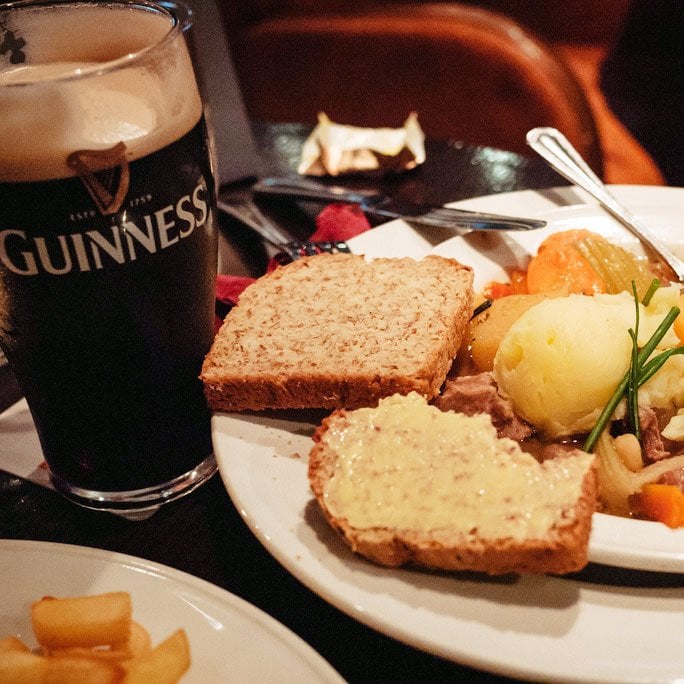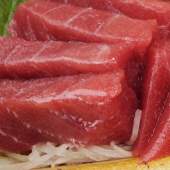Ireland

May your blessings outnumber
The shamrocks that grow,
And may trouble avoid you
Wherever you go.
– Traditional Irish toast
“Oh, wasn’t it the happy days when troubles we had not,
And our mothers made Colcannon in the little skillet pot.”
– “Colcannon” (song)
Anyone who lives in Chicago must surely be aware that the city takes its St. Patrick’s Day celebrations very seriously. Between the annual Loop, South Side, and Northwest Side parades, the (temporary) emerald green hue of the Chicago River, and the throngs of happy, shamrock-bedecked revelers filling the Irish pubs, restaurants, and taverns around town, there is something for everyone who claims Irish heritage (if only just for the day).
St. Patrick, of course, is the patron saint of Ireland, remembered for having brought Christianity to the country. Interestingly, he was not born there, but in Great Britain. He lived in the fourth century, and took to the religious life after six years as a shepherd, later becoming a missionary and eventually, a bishop. St. Patrick’s Day is celebrated on March 17 to commemorate his passing on that date.
Fun fact: The first known St. Patrick’s Day parade did not take place in Ireland, but in New York City in 1762, organized by Irish soldiers serving there. As the immigrants migrated west, they took their parade with them; these days, of course, you will find a St. Patrick’s Day parade in almost every major American city. Essential to these celebrations, of course, are the traditional Irish foods and libations connected with the holiday. Want the quintessential Irish culinary experience? Read on…
First, you’ll want to belly up to the bar and have a Guinness, an Irish dry stout that was originally brewed in Dublin way back in 1759 (maybe it was quaffed at that first parade in New York City). Not only is this brand of beer THE alcoholic beverage for St. Patrick’s Day (along with Bailey’s Irish Cream if you prefer a whiskey/liqueur), you will find it in many recipes for traditional Irish dishes, including stews, savory pies, and desserts.
Corned beef and cabbage: If you grew up in America in a home with parents of Irish descent, you almost certainly dined on this staple on St. Patrick’s Day. Oddly, this dish is pretty much an Irish-American thing, and not something that Irish natives are inclined to eat as a rule. Why? It might surprise you to learn that, over and above anything else in the culinary realm, for centuries Ireland was known for its production of salted meats, most of which were exported to other places, being for the most part too costly for the everyday Irish citizen. Craving some kind of meat, they latched on to the least expensive of these: salt pork, consumed more or less the way we eat bacon today. Soon after immigrants started arriving on our shores during and after the Great Potato Famine, they found the salt pork supply scarce, and, missing their homeland, adopted corned beef as the next best thing.
If you want a truly authentic Irish experience, pass on the corned beef and try seafood (especially smoked salmon) or lamb – either in a stew or served as a leg of lamb.
- Irish Stew or Dublin Coddle: a hearty bacon, sausage and potato stew that is also a great way to make use of leftovers.
-
Colcannon: What is colcannon, other than the title of a song that has long been popular in Ireland? Recipes vary, but the standard ingredients are mashed potatoes, butter, salt, pepper, cream, and kale (or cabbage). Additional additives might include chives, scallions, and leeks. Each region seems to have its own variation, though, and it’s usually served with sausages or bacon. This dish, popular on Halloween, has something in common with the King Cake at Mardi Gras: tokens for children (a coin, a button, a ring, and a thimble) are hidden inside. The finder of the ring, the story goes, would be married within the year; the finder of the coin would be wealthy; the button and the thimble would indicate a fate as a bachelor or spinster, respectively.
Colcannon - Shepherd’s Pie: This popular cold weather staple is a product, in general, of the British Isles, and is composed of lamb, gravy, and winter vegetables, with topped with browned mashed potatoes. Want it to have a specifically Irish flair? Substitute steak for the lamb and add Guinness.
- Soda Bread: This simple bread has only been around since about the 1840s, owing its existence to the invention of a key ingredient: bicarbonate of soda. It was originally baked not in an oven but in an iron pot or on a griddle over the family hearth; a cross is carved into the top to ward off evil spirits. It is served with creamy Irish butter.
Where in Chicago can you enjoy a taste of Ireland? Two longtime favorites that were featured on Check, Please! are Chief O’Neill’s and Lady Gregory’s, where the Guinness is sure to be flowing in abundance. And just a word of warning: when you go, be sure to wear green – if you don’t, according to Irish lore, you might be pinched by a leprechaun!





